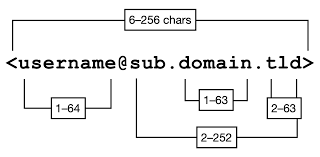As an expert in the field of email validation, I often encounter questions about the maximum length of email addresses. It's a topic that holds significance not only for developers and IT professionals but also for anyone who uses email. In this comprehensive guide, I will unravel the mysteries surrounding the maximum length of email addresses. We'll explore the standards, real-world implications, and common misconceptions, leaving you with a clear understanding of email address length limits.
The Significance of Email Validation
Before we delve into the specifics of email address length, let's take a moment to understand why email validation is a critical aspect of online communication:
Data Integrity: Validating email addresses ensures that the data collected is accurate and correctly formatted, reducing errors and enhancing the quality of databases.
Security: Email validation helps prevent misuse and fraud, such as creating fake accounts or sending malicious emails from invalid addresses.
Communication: Accurate email addresses are essential for effective communication, ensuring that messages and notifications reach the intended recipients.
Now that we've established the importance of email validation, let's explore the maximum length of email addresses.
Defining the Maximum Length
Email addresses consist of two main parts: the local part (before the "@" symbol) and the domain part (after the "@" symbol). According to the relevant standards, the maximum length of each part is as follows:
Local Part: The local part of an email address can have a maximum length of 64 characters.
Domain Part: The domain part of an email address can have a maximum length of 255 characters.
When you combine the local and domain parts, the maximum length of a complete email address is 320 characters.
These length limits are defined by the Internet email standards, specifically by the Request for Comments (RFC) documents that govern email protocols. The primary RFCs that specify these limits are RFC 5321 and RFC 5322.
Real-World Implications
Understanding the maximum length of email addresses is crucial for various reasons:
1. Form Validation
Developers often implement form validation to ensure that users enter valid email addresses. Knowing the maximum length limits helps prevent issues such as buffer overflows and database errors caused by excessively long inputs.
2. User Experience
For users, knowing the maximum length is essential when signing up for online services or providing their email addresses. It prevents them from entering extremely long, invalid addresses.
3. Database Management
Organizations and email service providers must manage databases with millions of email addresses. Adhering to length limits ensures efficient storage and retrieval of data.
4. Avoiding Errors
Exceeding the maximum length can result in errors during email transmission, leading to undelivered messages or misrouted emails.
Common Misconceptions
There are a few misconceptions surrounding email address length limits:
1. "320 characters seem excessive."
While 320 characters might seem generous, it accounts for various scenarios, including long domain names, subdomains, and internationalized email addresses.
2. "I can send emails from any address, regardless of length."
Email service providers may impose additional restrictions on sending emails from excessively long or suspicious addresses to prevent misuse.
3. "Shorter is always better."
While shorter email addresses are more convenient, they must still adhere to the defined maximum length limits.
Frequently Asked Questions (FAQs)
Q1: Can I have an email address longer than 320 characters?
A1: According to email standards (RFC 5321 and RFC 5322), the maximum length of an email address is 320 characters, combining the local and domain parts. Longer email addresses may not be accepted by some email systems.
Q2: Is there a minimum length requirement for email addresses?
A2: There is no minimum length requirement specified by email standards. However, email service providers may have their own policies regarding minimum address length.
Q3: Can international characters be longer in email addresses?
A3: Internationalized email addresses (those with non-ASCII characters) can be longer due to encoding. However, they must still adhere to the 320-character limit.
Q4: What happens if I exceed the maximum length when sending an email?
A4: Exceeding the maximum length may result in email transmission errors or rejection by the recipient's email system.
Conclusion
Understanding the maximum length of email addresses is essential for developers, email users, and organizations alike. Adhering to the defined standards ensures data integrity, security, and efficient email communication. Remember that while 320 characters might seem generous, it accounts for various scenarios, making it a crucial aspect of email validation and communication in the digital age.



